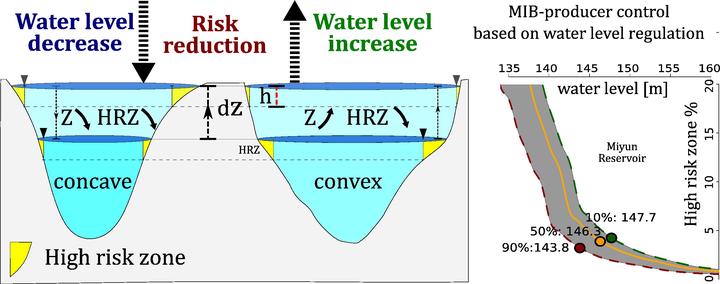Reducing production of taste and odor by deep-living cyanobacteria in drinking water reservoirs by regulation of water level
 Graphic Abstract
Graphic Abstract
Abstract
Abatement and control of algae, producing toxins and creating taste & odor (T&O) in drinking water sources, is a major challenge for water supply. In this study we proposed a strategy based on water level regulation for the control of odor-producing cyanobacteria in source water. Miyun Reservoir, the main surface water source for Beijing, has been suffering from 2-methylisoborneol (2-MIB) induced T&O problems caused by deep-living Planktothrix sp. since 2002. The biomass of deep-living Planktothrix in Miyun Reservoir was found to be mainly governed by the water depth above its sediment habitat. An algorithm for water level regulation aiming to minimize the risk for T&O in different types of reservoirs is proposed. The study demonstrates that risk for T&O can be minimized by increasing the water level in Miyun Reservoir. The high-risk area can be reduced by about 2.91% (0.61% to 5.76%) of surface area for each meter increase in the water level, when the water level is lower than 145 m. More specifically, the water level needs to be raised to higher than 147.7 m a.s.l. from 131.0 m in order to obtain an acceptable risk level (ARL) of 10%. This management strategy to abate T&O problems is simpler and cheaper to implement compared to traditional physical, chemical and biological techniques. Moreover, it has no apparent negative impact on water quality and aquatic organisms.
Highlights
- Water level lowering triggered the deep living cyanobacteria bloom in Miyun Reservoir.
- The shallow areas in Miyun Reservoir are the major habitats for Planktothrix sp.
- The Planktothrix could bloom in mesotrophic water due to its low light requirement.